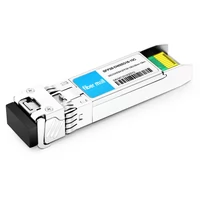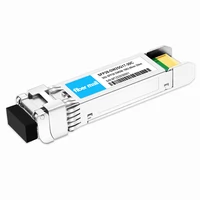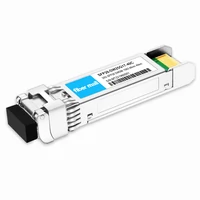In the dynamic telecommunications environment, fiber optic capacity can be maximized using Dense Wavelength Division Multiplexing (DWDM) technology. In this context, what are the key components of DWDM? 25G DWDM SFP28 transceivers are unique because they enable high-speed data transmission over long distances. This manual explains everything about 25G DWDM SFP28 transceivers, including technical specifications, uses, and advantages. Whether you want to enhance your network as a systems engineer or need some advanced knowledge about transceivers as a telecommunication professional, this article is for you. We shall look at how it works with other devices like SFP28 modules, which have different features that contribute to stronger and more efficient network performance.
Table of Contents
ToggleWhat is a 25G DWDM SFP28 Transceiver?
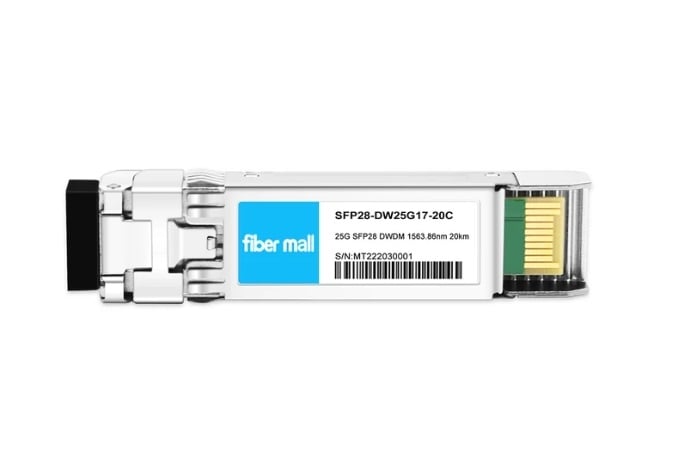
Understanding DWDM and its Uses
Dense wavelength division multiplexing (DWDM) is an advanced optical multiplexing technique that enables you to send numerous data signals via a single optical fiber through different laser light wavelengths or channels. This dramatically boosts capacity while maximizing the use of existing fiber optic infrastructures. Because it can transmit large amounts of information over long distances without significant attenuation, DWDM is most commonly used in long-haul and metropolitan area networks. The main applications for this technology are expanding network capability, improving efficiency in transmitting data and supporting high-speed broadband services too. With such features as scalability optimization and flexibility improvement into optical networks by service providers using DWDM technologies, they will be able to satisfy continuously growing demands for data throughput rates while ensuring their systems remain highly flexible.
The Role of Optical Transceivers in Modern Networks
Optical transceivers are crucial in today’s telecommunications and data networks since they act as an interface amid physical fiber optic cables and electronic network components. Such devices convert electrical signals to optical ones that can be transmitted over the fiber, and then back into electrical signals at the receiving end. This conversion is necessary for high-speed data transfer and preserving signal integrity over long distances.
Some important technical parameters of optical transceivers are as follows:
- Data Rate: A 25G DWDM SFP28 transceiver supports data rates up to 25 Gbps, which allows fast transmission of data required by modern networks.
- Wavelength: DWDM SFP28 modules work on certain wavelengths in the C-band (1525-1565 nm), where each channel is spaced at intervals of 100 GHz or 50 GHz so that multiple channels can be accommodated on the same fiber.
- Transmission Distance: These transceivers can transmit data up to 80 km without regeneration of signals due to advanced Forward Error Correction (FEC) mechanisms used.
- Form Factor: The small form factor pluggable 28 (SFP28) ensures a compact hot-swappable solution for easy network maintenance and upgradeability.
- Power Consumption: Typically, power consumption of a 25G DWDM SFP20 transceiver does not exceed 3.5 watts making it power efficient therefore reducing operational costs as well as heat generation.
By using these sophisticated optical transceivers, service providers can significantly increase their systems’ bandwidth capacity, reliability and scalability thus meeting ever increasing demand for modern data communication services.
25G SFP28 Technology: Features and Benefits
Wide Data Rate and Bandwidth
Modern network infrastructures require higher data rates and bandwidth, which is why there are 25G SFP28 transceiver modules. With these modules, it supports data rates of up to 25 Gbps that can process large amounts of data traffic as well as satisfy the needs for data-intensive applications. This increase in the rate at which information can be sent between computers over a network ensures that operators maximize their resources for optimal performance and high throughput.
Wavelength and Frequency Spectrum Efficiency
The 25G SFP28 transceivers operate on DWDM (Dense Wavelength Division Multiplexing) spectrum hence use the C-band (1525-1565 nm) with narrow channel spacing either 100 GHz or 50 GHz depending on what is required. This utilization of wavelength and frequency spectrum helps to achieve larger channel capacity within one optical fiber thus allowing multiple data streams to be transmitted concurrently without crosstalk.
Transmission Distance Enhancement
It has been designed for long distance transmission with maximum reach being 80 km. They also include Forward Error Correction (FEC) which corrects errors caused by noise during transmission thereby ensuring signal integrity even over long distances making them suitable for metropolitan area networks (MANs) or wide area networks (WANs) where signals need not be regenerated frequently.
Compact Form Factor
The small form-factor pluggable SFP28 module is easy to install and maintain due to its size. The hot-swappable feature allows upgrades in networks without affecting other parts, while physical layer improvements can be made quickly because they are done while the device remains powered on, thus reducing downtime significantly. Being compact gives room for more ports per unit height space used by equipment such as switches and routers, leading to higher densities achieved within a given rack space, which is especially useful when dealing with large-scale data centers.
Low Power Consumption
Energy efficiency should always be considered in any modern networking device design. The average power consumed by 25G SFP28 transceivers is less than 3.5W which lowers operation costs and reduces heat dissipation. This energy saving feature ensures that networks can be run at low cost for a long time without any breakdown especially in environments where many data centers are involved.
There are several advantages of using the 25G SFP28 technology such as increased network capacity, improved quality of data transmission and higher operational efficiency which are necessary for building scalable and reliable modern network infrastructures that can support unprecedented growth in data demand.
How Does a 25G DWDM SFP28 Transceiver Work?
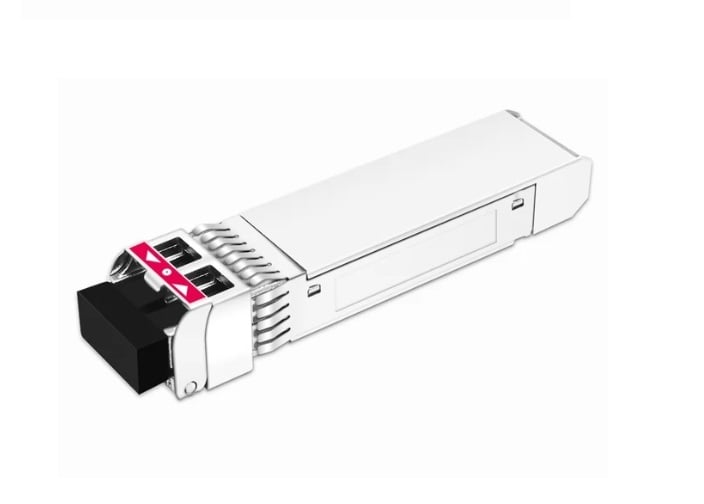
Technical Specifications of 25G DWDM SFP28
25-gigabyte dense wavelength division multiplexing small form-factor pluggable 8 transmitters are planned for use in intricate optical networks to provide high performance and dependable data transmission. Here are a few important details:
Waveband
25G DWDM SFP28 usually functions on some specific ITU-T grid wavelengths between 1528.77 nm and 1563.86 nm. This compact wavelength assignment enables mass data transfer by packing various channels into one fiber.
Data Rate
These devices can accommodate speeds up to 25 Gbps which is capable of managing heavy traffic streams needed by contemporary communication systems.
Reach
The modules are designed to transmit signals over distances up to 40 kilometers without any regeneration thus making them perfect for metropolitan or long-haul networks deployment.
Connectivity
LC duplex connectors are commonly used so that these gadgets can be easily connected to already existing systems.
Interface
Electrical interface of the 25G DWDM SFP28 meets the requirements set in Multi-Source Agreement (MSA) standards therefore ensuring that it can work well with diverse types of network equipment.
Modulation
NRZ and other advanced techniques are employed during modulation process in order not only to maintain integrity but also maximize efficiency of bandwidth usage.
Power consumption
They keep typical power consumption levels below 3.5 watts which helps lower operational expenditures as well as reduce heat dissipation within data centers.
Temperature range
These units operate efficiently at any given time when ambient temperature ranges from 0°C – 70°C meaning that they will always deliver reliable results regardless environmental changes around them.
To sum it all up, this device possesses strong technical specifications necessary for supporting large capacity long haul distance communication through light waves, hence becoming a critical component in any advanced or scalable network infrastructure.
Overview of Optical Wavelengths and Channels
Definition and Significance
In dense wavelength division multiplexing (DWDM) systems, optical wavelengths and channels are very important because they enable the transmission of multiple data streams through a single optical fiber at the same time. Each of these channels or wavelengths is a different frequency of light that carries its own data signals, thereby increasing the capacity and efficiency of optical networks tremendously.
Channel Spacing
Channel spacing in DWDM systems refers to the gap between two adjacent optical channels. Examples of standard channel spacing values are 50 GHz and 100 GHz. This means that many closely located channels can be used which allows for more data transmission over the same fiber infrastructure.
Wavelength Range
Typically, DWDM systems operate within what is known as the C-band (1520 nm to 1570 nm), sometimes even extending into the L-band (1570 nm to 1610 nm). It is preferred to use these bands because they have low attenuation in optical fibers thus enabling long distance transmissions without much loss of signal power.
ITU Grid
For DWDM systems, a grid of wavelengths has been standardized by The International Telecommunication Union (ITU). The ITU-T G.694.1 recommendation gives specific channel frequencies and corresponding wavelengths that should be followed worldwide so as to ensure compatibility between different vendors’ equipment among other things. For example, one may find a common wavelength on the 100 GHz grid around 1550.12 nm (channel 20).
Channel Capacity
Modulation format, together with data rate, mainly determines how much capacity each optical channel will have also called bandwidth; this can be illustrated using the:
- 25G NRZ: Supports up to 25 Gbps per channel.
- 50G PAM4: Supports up to 50 Gbps per channel.
Amplification & Signal Regeneration
Erbium-Doped Fiber Amplifiers (EDFAs) are employed to keep signal quality intact throughout longer distances. They do this by increasing the strength of the signal, which reduces the number of times that it needs to be regenerated, thereby making long-haul transmissions more efficient.
Summary of Technical Parameters
- Channel Spacing: 50 GHz, 100 GHz.
- Wavelength Range: C-band (1520 nm – 1570 nm) and L-band (1570 nm – 1610 nm).
- ITU Grid Compliance: ITU-T G.694.1.
- Modulation Formats: 25G NRZ, 50G PAM4.
- Amplifiers: EDFA.
Therefore, incorporating these technical parameters in DWDM systems ensures that optical network performance is high-capacity, scalable, and reliable enough to meet modern communication infrastructure needs.
Installation and Integration with Network Hardware
It is essential to ensure that dense wavelength division multiplexing (DWDM) systems are properly installed and integrated with existing network hardware for the best performance and reliability.
Installation Procedure
The installation process typically involves the following stages:
- Site Preparation: Check whether the installation site meets environmental requirements such as controlled temperature, humidity levels, and enough space for equipment.
- Rack and Stack: Mount DWDM equipment on standard 19-inch or 23-inch server racks as specified by the manufacturer for proper securing and positioning of the hardware.
- Power Cable Management: Connect power cables to respective power sources, considering redundancy while applying appropriate grounding methods.
- Fiber Optic Connectivity: Follow correct handling procedures when connecting fiber optic cables to DWDM transponders plus multiplexers/demultiplexers to avoid damaging them or causing signal loss.
Steps for Integration
To integrate well with existing network hardware, do as follows:
- Network Configuration: Update network infrastructure to support the new DWDM system. This entails configuring routers, switches, etc., so that they can identify & efficiently route optical signals.
- Testing and Validation: Conduct thorough testing of DWDM channels together with overall network performance. Use Optical Time Domain Reflectometers (OTDR) & Bit Error Rate Testers (BERT) among other tools for checking signal integrity & continuity of paths.
- Interoperability: Make sure that the DWDM system works with existing network protocols & hardware. Firmware upgrades may be required or some adjustments in network management software need to be made.
- Monitoring and Management: Establish monitoring solutions for overseeing how well DWDM networks are performing. Proactive care can be taken through the employment of Network Management Systems (NMS) coupled with Optical Performance Monitoring (OPM) tools, among others. If potential problems are detected early enough, then steps will be taken before they become severe .
Best Practices
- Documentation: Keep detailed records about installation process besides configuration steps followed during this exercise because it will help a lot when troubleshooting or upgrading later on.
- Redundancy Planning: Design DWDM systems with network resilience in mind so that they can handle failures as well as achieve high availability.
- Training: Educate network engineers and technical staff on the operation & maintenance of the DWDM system.
By adhering to these suggestions, one can ensure quick installation and integration of DWDM systems into existing networks, thereby creating strong, scalable solutions for optical communication.
Why Choose 25G DWDM SFP28 Over Other Options?
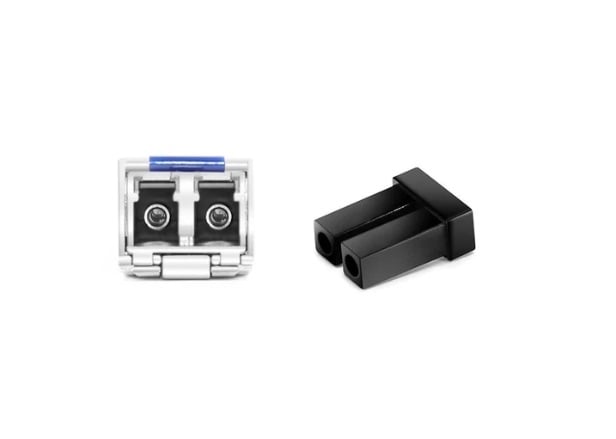
Advantages of 25G Ethernet over 10G and 40G
- Wider Bandwidth: 25G Ethernet is faster than 10G Ethernet by 2.5 times, so it is more suitable for applications that require high-speed data transfer.
- Cost Efficiency: In contrast to the 40Gbps standard, an upgrade to 25G Ethernet can be accomplished cheaply by reusing the same infrastructure employed in 10-gigabit deployments thus eliminating the need for expensive hardware overhauls.
- Power Consumption: This kind of Ethernet usually uses less energy than its predecessor (40Gbps), which leads to lower operational costs and reduced environmental impact.
- Port Density: When compared with any other Networking device or Switch; twenty-five gigabit ethernet allows higher port density that proves useful when space optimization should be achieved while keeping capacity expandable for future growth within data centers.
- Scalability: The current specification for twenty-five Gigabits per second was designed keeping scalability at its core so as to enable smooth migration towards either fifty or hundred Gbits/s networks in future without requiring massive changes across already existing network infrastructures.
DWDM vs. CWDM: Understanding the Differences
To increase the bandwidth of optical fiber networks, Dense Wavelength Division Multiplexing (DWDM) and Coarse Wavelength Division Multiplexing (CWDM) technologies are used which allow many data channels to be transmitted simultaneously over a single optical fiber. Below are some key differences between them, along with technical parameters:
Channel Spacing:
- DWDM: It employs much narrower channel spacing of about 0.8 nm (100 GHz) that permits more number of channels up to 96 in a typical system.
- CWDM: Channel spacing is wider which is approximately 20nm under ITU-T G.694.2 standard thus it allows fewer channels than DWDM.
Wavelength Range:
- DWDM: C-band (1530-1565 nm) and L-band (1570-1610 nm) wavelength ranges are operated by this technology.
- CWDM: O-band and above is covered by CWDM over a wider range i.e., 1270-1610nm [ITU-T G.694.2].
Amplification:
- DWDM: Erbium-Doped Fiber Amplifiers (EDFAs) can be used with DWDM systems so as to amplify signals for several hundred kilometers.
- CWDM: EDFAs implementation is not common practice hence limiting transmission distances around 80km without additional amplification.
Cost Considerations:
- DWDM: The cost is higher because these systems need more precise components, complex installation and narrow channel spacing requires cooling systems.
- CWDM: Less expensive comparatively simpler components are used along with less stringent specifications.
Power Consumption:
- DWDM tends to consume more power due active cooling and complex transceivers while CWDM consumes less power because it uses less complex electronics which requires only passive cooling.
Application areas:
- DWDM – It is suitable for long hauls and metropolitan area networks where high capacity together with long distance without regeneration is required.
- CWDM – This technology works best for short to medium distances such as Metro and access networks.
In summary, whether to choose DWDM or CWDM depends largely on the specific requirements of the network application including distance, capacity as well as budget considerations.
Cost and Performance Benefits in Data Centers
Using data centers, the cost and performance benefits of Dense Wavelength Division Multiplexing (DWDM) and Coarse Wavelength Division Multiplexing (CWDM) technologies are distinct. Higher bandwidth is offered by DWDM and it supports longer transmission distances thus being suitable for long-haul networks and high-capacity data center interconnects. In contrast, CWDM is less expensive with lower power consumption which makes it a good choice for short-to-medium distance communications like those within campus networks or metro areas.
Cost Benefits:
- DWDM: Although they require significant upfront investments, these can compensate themselves by being able to handle larger amounts of data hence reducing the number of physical fibers necessary thereby leading to decreased total cost of ownership in highly utilized environments.
- CWDM: Simpler optics result into reduced cooling requirements thereby lowering both initial setup costs as well as ongoing operational expenses; additionally, this type of infrastructure allows modular scaling so that only what is required at present needs to be paid for while leaving room for future growth steps which saves money spent on each step.
Performance Benefits:
- DWDM: DWDM can increase data throughput significantly because it has the ability to support up 96 channels on one fiber which is critical for large scale operations in data centres. When used together with EDFAs it also ensures strong signal quality over long distances.
- CWDM: Even though CWDM provides fewer channels (up to 18), its wider channel spacing results in simpler and more affordable optics. This feature also allows quick expansion capabilities within limited spaces such as smaller DCs where the effective range may not extend very far but still needs flexibility in terms of rapid growth options available.
To sum up, the choice between DWDM & CWDM rests upon specific network needs vis-à-vis financial factors, taking into account capacity vs distance trade-offs against power-saving measures adopted during operation phases while considering overall costs incurred over time.
What Should You Look for in a 25G DWDM SFP28 Transceiver?
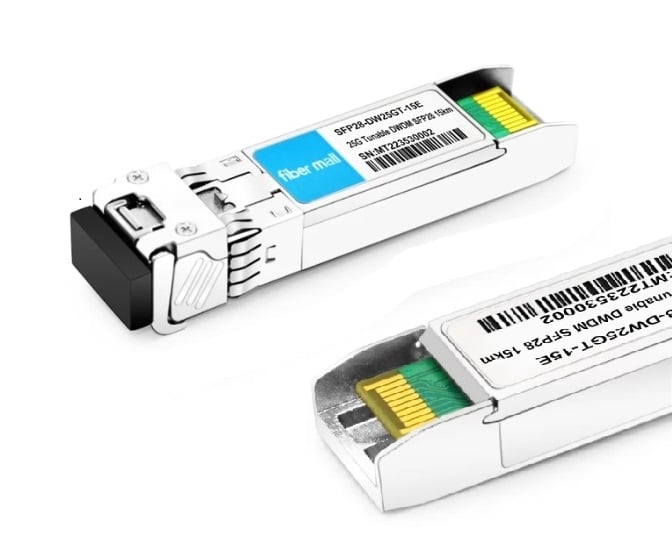
Key Features to Consider: Data Rate, Distance, and Compatibility
Data Speed
When appraising the 25G DWDM SFP28 transceiver, the data rate is extremely important. This kind of transceivers is meant to accommodate data rates of up to 25 Gbps; thus, they are capable of dealing with high bandwidth applications and large data transmissions proficiently. Such devices are ideal for contemporary data centers that need fast as well as dependable connections.
Range
The range offered by a 25G DWDM SFP28 transceiver is another critical factor to consider. Normally, these transceivers exhibit strong performance over various distances spanning from a few kilometers up to more than 80 kilometers depending on different models; amplification could also be used together with dispersion compensation technologies such that desired ranges are attained quickly. It is, therefore, necessary to ensure that what your network requires matches with what this transceiver can do in terms of ranges.
Interoperability
One must prioritize compatibility while incorporating any given 25G DWDM SFP28 transceiver model into the already existing network infrastructure. This implies verifying whether it can indeed work well with other devices like switches, routers, or even optical transport systems, which one might have at hand at present. Furthermore, it would be better if you take into account certain industry benchmarks such as MSA (Multi-Source Agreement) compliance since this will not only ensure interworking but also enable smooth integration among multiple vendors.
Compliance and Certification: ITU-T, RoHS, and SFF-8472
ITU-T Conformity
The point of satisfying ITU-T (International Telecommunication Union – Telecommunication Standardization Sector) standards is to make certain the 25G DWDM SFP28 transceiver complies with international requirements for telecommunication and data communication systems. Among the frequently applicable ITU-T recommendations for this category of transceivers are G.694.1, which describes spectral grids for WDM applications, and G.698.2, which specifies physical layer parameters of 2.5G/10G/40G DWDM systems. When these standards are followed, interoperation ability and reliability are guaranteed in various network environments.
RoHS Compliance
RoHS (Restriction of Hazardous Substances) compliance should be done because of environmental protection and safety issues surrounding them; if a product does not meet RoHS requirements, then it cannot be used in any country within the European Union or other places where this directive applies worldwide. It ensures that no harmful materials like lead, mercury, cadmium, etc., are used during the manufacturing process. This will not only save our environment but also keep up with current regulations set by electronic industry standards.
SFF-8472 Compatibility
If a device is said to be SFF-8472 compliant, it means that the module supports digital diagnostic monitoring (DDM). This allows real-time measurement of optical output power, optical input power, temperature, laser bias current, and supply voltage, among others. The benefit of using such modules in your network infrastructure is that they provide better manageability as well as troubleshooting capabilities. Moreover, there are some technical parameters given by DDM that can be used in network management so that everything operates optimally, thus avoiding failures before they happen through proactive maintenance.
By following these guidelines ,we can achieve better results such as reliable performance environmentally friendly design or easy administration while working with high bandwidth applications in modern data centres using 25G DWDM SFP28 transceivers.
Third-Party Compatibility and Vendor Options
When picking out a 25G DWDM SFP28 transceiver, be sure it works with third-party equipment and comes in different vendor options. As the top-most websites suggest, FS.com, Cisco and Arista are among the leading vendors who offer these types of transceivers that can work on many platforms from various brands. They say their transceivers can work with many networking hardware; hence, they can be easily integrated into the current systems. Compatibility is what makes Cisco’s line of 25G DWDM transceivers unique, especially when used together with their wide-range routers and switches because it provides flexibility in setting up different networks. Arista’s transceivers have strong performance records as well as reliability features, which allow them to support several third-party equipment, thus promoting network scalability besides vendor flexibility. These options do not just cater for compatibility needs but also ensure that people can find the right transceiver for their specific networking needs without compromising quality or performance.
How to Optimize Your Network with 25G DWDM SFP28 Transceivers
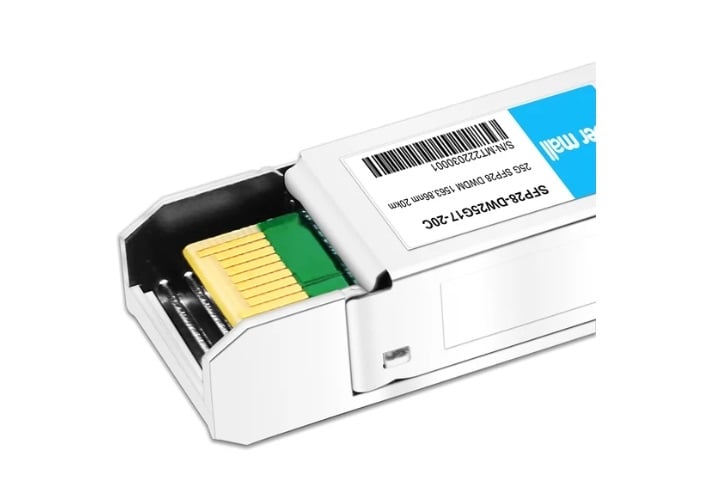
Network Planning and Infrastructure Considerations
If you want to plan a network with 25G DWDM SFP28 transceivers and make it work best, consider the following factors. The first thing that has to come in mind is whether or not my current system could accommodate this new technology of 25G. You should ask yourself if your optical cabling can support these wavelengths and distances required for DWDM technology. Think about where those boxes are mounted on racks inside data centers because this affects space utilization as well as airflow optimization, so we need to look into the density and place of transceiver modules in detail, too! It’s good also to think ahead while planning by choosing devices that can easily be upgraded when there will be a need for higher data rates considering scalability too. Carry out thermal management properly or else do power usage analysis dearly since such things could kill the modules faster than expected, thereby affecting their performance over time, which won’t be good enough at all. We should not forget network management tools either because without them, one cannot monitor performance across systems, thus leading to failure integration-wise throughout organizations’ networks; therefore, they are very important during the integration process even though most people ignore this fact completely until things start going wrong somewhere somehow.
Interconnect Solutions: Mux Demux and Cable Management
Mux Demux (Multiplexer and Demultiplexer) interconnect solutions and good cable management are two essential components to optimize a network infrastructure with 25G DWDM SFP28 transceivers.
Interconnect Solutions for Mux Demux in DWDM Networks
Devices of this kind play an important role in any system by combining several data signals into one fiber optic cable. The effect is that it increases the efficiency of bandwidth utilization across the network. The following are some technical specifications you should know while choosing these devices for your 25G DWDM setup:
- Channel Spacing: It can be either 100 GHz or 50 GHz, so make sure they match the wavelength grid provided by transceivers.
- Insertion Loss: Normally about 3 dB to 5 dB per channel; lower values mean better performance over the entire system.
- Channel Count: Available options include four, eight, sixteen and more channels; choose what suits your scalability needs best.
- Isolation: Crosstalk between channels should be reduced as much as possible i.e., >30dB.
Cable Management
It is necessary to have proper cable management for efficient operation and maintenance of network infrastructure. Considerations include:
- Cable Types: Single-mode fibers (SMFs) work best for long distance transmission common with DWDM applications.
- Connector Types: Small form factor LC connectors are recommended because they are reliable and widely used.
- Bend Radius: Follow minimum bend radius specified for each cable type (>30 mm) to prevent signal degradation.
- Routing & Labeling: Employ structured cabling systems with identifiable routes that simplify troubleshooting during maintenance activities.
- Patch Panels & Cable Trays – For easy connection management use patch panels, also organize cables neatly using trays which will improve airflow thus reducing thermal issues in the facility.
To greatly improve performance levels within your 25G DWDM networks, integrate solid MUX DEMUX units alongside healthy practices pertaining to comprehensive cabling systems.
Upgrading Strategies for Existing Network Infrastructure
Consider the ensuing strategies when upgrading the current network infrastructure in order to ensure smooth transition and minimal downtimes:
- Evaluate the Performance of the Current Network: A comprehensive audit should be done on the existing network so as to identify areas that are slow, obsolete hardware as well as those that need improvement. Network analyzers and performance monitoring software may provide useful tips during this process.
- Step-by-step Upgrades: It is advisable to make incremental changes instead of doing a complete overhaul since it reduces disruptions. This can involve putting in place new access points, replacing old switches and routers with more advanced ones or even implementing higher capacity transmission lines.
- Making components future proof: New systems and components should be scalable and adaptable to future technologies. Multi-gigabit capable hardware, software defined networking (SDN) solutions among others which can easily adjust with time should be chosen for this purpose.
- Vendor’s Support and Compatibility: Go for vendors who offer strong support services; they should also ensure compatibility between any new component with existing systems which will help in smoothing their integration thereby minimizing chances of problems arising from component mismatching.
- Training Staff Members plus Documenting the Changes: Administrators should train all IT personnel about these fresh technologies and upgrades so that they can manage them effectively. Troubleshooting needs adequate record keeping through comprehensive documentation on what was done differently during this period thus staff must also document everything for future reference purposes.
These methods enable better-performing networks through more efficient upgrades that also enhance reliability while laying ground for future expansion.
Frequently Asked Questions (FAQs)
Q: What is a 25G DWDM SFP28 transceiver?
A: A 25G DWDM SFP28 transceiver is an optical module that can transmit data at a speed of 25gbps through a DWDM network. It is widely used for long distances in high-capacity telecommunication and data center applications.
Q: Which fiber types can be used with the 25G DWDM SFP28 transceiver?
A: The 25G DWDM SFP28 transceiver works over single-mode fiber (SMF), designed for long-distance optical interconnects. The typical reach can be up to 10km on SMF.
Q: What are the key features of a 25G DWDM SFP28 module?
A: Normally, a 25G DWDM SFP28 module has such characteristics as data rate of 25gbps, support for100GHz channel spacing, and LC duplex connector. These modules are intended for use in systems based on dense wavelength division multiplexing technology where many wavelengths are transmitted over one fiber thereby allowing to increase bandwidth.
Q: How does a 25G DWDM SFP28 transceiver enable high data rates?
A: By using advanced modulation techniques along with high-quality optical components, the 25G DWDM SFP28 transceiver achieves higher data rates. With these features, the device can work at up to 25gbps which makes it suitable for applications that require large capacity like wireless&5g optical networks.
Q: Are there any third-party compatible versions of the 25G DWDM SFP28 transceiver available?
A: Yes, there are third-party compatible versions of this product available on the market. For instance, fs.com europe offers some compatible optics modules that allow you to upgrade or expand your network infrastructure cost-effectively without sacrificing performance quality.
Q: What is the usual transmission distance of the 25G DWDM SFP28 transceiver?
A: The typical transmission distance for a 25G DWDM SFP28 transceiver is about 10km over single-mode fiber (SMF). It can be used in metropolitan area networks as well as other long-haul optical interconnection scenarios.
Q: Can I use a 25G DWDM SFP28 transceiver in 100GHz DWDM systems?
A: Yes, you can use it because this kind of transceiver supports 100GHz channel spacing required by dense wavelength division multiplexing networks, which are designed to maximize fiber capacity utilization.
Q: What types of connectors do 25G DWDM SFP28 transceivers have?
A: In general, LC duplex connectors are employed with these devices for making optical connections. LC connector is small sized and highly reliable thus widely used in high-density networking applications.
Q: Do 25G DWDM SFP28 transceivers support CPRI applications?
A: Yes, they do. The Common Public Radio Interface (CPRI) specification addresses requirements for wireless&5g optical networks where large amounts of data need to be transferred between base stations and remote radio heads efficiently and reliably.

